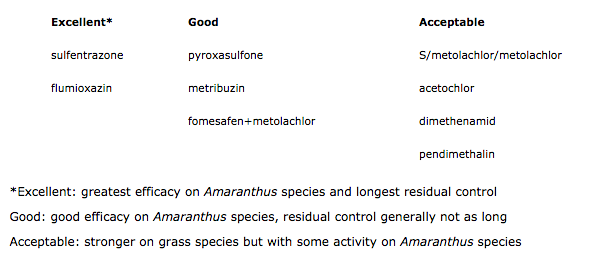It’s difficult to recall the debut of a weed management technology that generated more divisiveness than the 2017 introduction of dicamba-resistant soybean varieties and the accompanying use of dicamba. Damage to off-target vegetation from myriad sources of exposure resulted in not only monetary losses, but also untold costs to professional and personal relationships. Trust that took years to build was damaged or lost in the span of one growing season. This includes the public trust in pesticide use.
The United States Environmental Protection Agency (EPA), in response to the unprecedented number of complaints, issued several amendments to the XtendiMax, Engenia, and FeXapan labels last October that will impact all purchases and applications of these products in 2018 and beyond. The intent of these label amendments is to reduce sensitive plant species exposure to dicamba primarily through physical movement (i.e., drift during the application or particle movement during temperature inversions) or via dicamba residues dislodged from application equipment, but these modifications will do nothing to reduce exposure via volatility.
Industry projections for 2018 suggest planted acres of dicamba-resistant varieties could be double the acres planted last year. Concerns about how the technology will be used and the possible implications of large-scale damage to non-target vegetation in 2018 remain at the forefront of countless conversations.
The continued availability of this technology on soybean beyond the November 2018 label expiration date likely will be determined this growing season. Frankly, how dicamba is managed on soybean in 2018 could also impact the continued use of dicamba on other crops in the future. Much is at stake.
Last November, an ad-hoc committee from the Weed Science Society of America received a request from the EPA to offer suggestions for what success or failure for dicamba might look like in 2018. Weed scientists from soybean-producing regions offered many thoughtful comments, but for brevity I include only the response I submitted:
Success: The use of dicamba as one component of an integrated weed management program that emphasizes proper selection and application of effective soil-residual herbicides and only EARLY postemergence applications of dicamba (i.e., ~14 days after planting) followed by implementation of other herbicide or non-herbicide tactics to ensure zero weed seed production.
Failure: The singular use of dicamba as a postemergence herbicide in dicamba-resistant soybean.
Keep in mind the reason for investing in any weed management technology is to adequately control competing vegetation so the crop can express its full genetic yield potential. Merely measuring “success” in terms of reducing the number of official dicamba complaints or reports of damage to off-target vegetation diminishes the value of utilizing this technology for weed management.
Every herbicide application must follow all label directions and minimize off-target movement of spray particles. It is the absolute responsibility of the applicator, whether private or commercial, to follow all label directions before, during, and after the application of dicamba. Undoubtedly, there will be instances in 2018 when commercial applicators will have to refuse to spray if prevailing conditions are in violation of the label.
Conditions that would prevent a commercial applicator from spraying also would prevent spraying by private applicators. Clearly, it is in the best interest of maintaining the availability of this technology not to spray when prevailing conditions would result in an off-labeled application.
Previously, we offered precautions for use of dicamba in dicamba-resistant soybean. Label guidelines and restrictions are meant to reduce physical movement of spray particles during application, but volatility is not prevented by label language. Registrants have publically stated the approved dicamba formulations are not no-volatility formulations, and recently generated university data would support that statement. Volatility is largely driven by temperature, so utilizing dicamba earlier in the season when temperatures are cooler could help reduce off-target movement via volatility.
Herein, we offer the following suggestions to promote successful weed management in dicamba-resistant soybean.
Steps for Successful Weed Management in Dicamba-Resistant Soybean
Step 1:
Plant dicamba soybean seed into a weed-free seedbed.
Step 2:
Select and apply within 7 days of planting a soil-residual herbicide that targets your most problematic weed species. If desired (and labeled), add dicamba and an appropriate buffer.
For waterhemp or Palmer amaranth, select a product containing the active ingredients from one of the following categories of control:

Step 3:
Scout fields 14 days after planting. Apply dicamba at 0.5 lb ae/acre when weeds are less than 3 inches tall and when conditions allow for the application. Consider adding an approved soil-residual herbicide to the tank mix.
Step 4:
Scout treated fields 7 days after the dicamba application. If control is not complete or another flush of weeds has emerged, consider using non-dicamba options for complete control. Examples include alternative herbicides, cultivation, and hand rogueing. The goal should be zero weed seed production.





